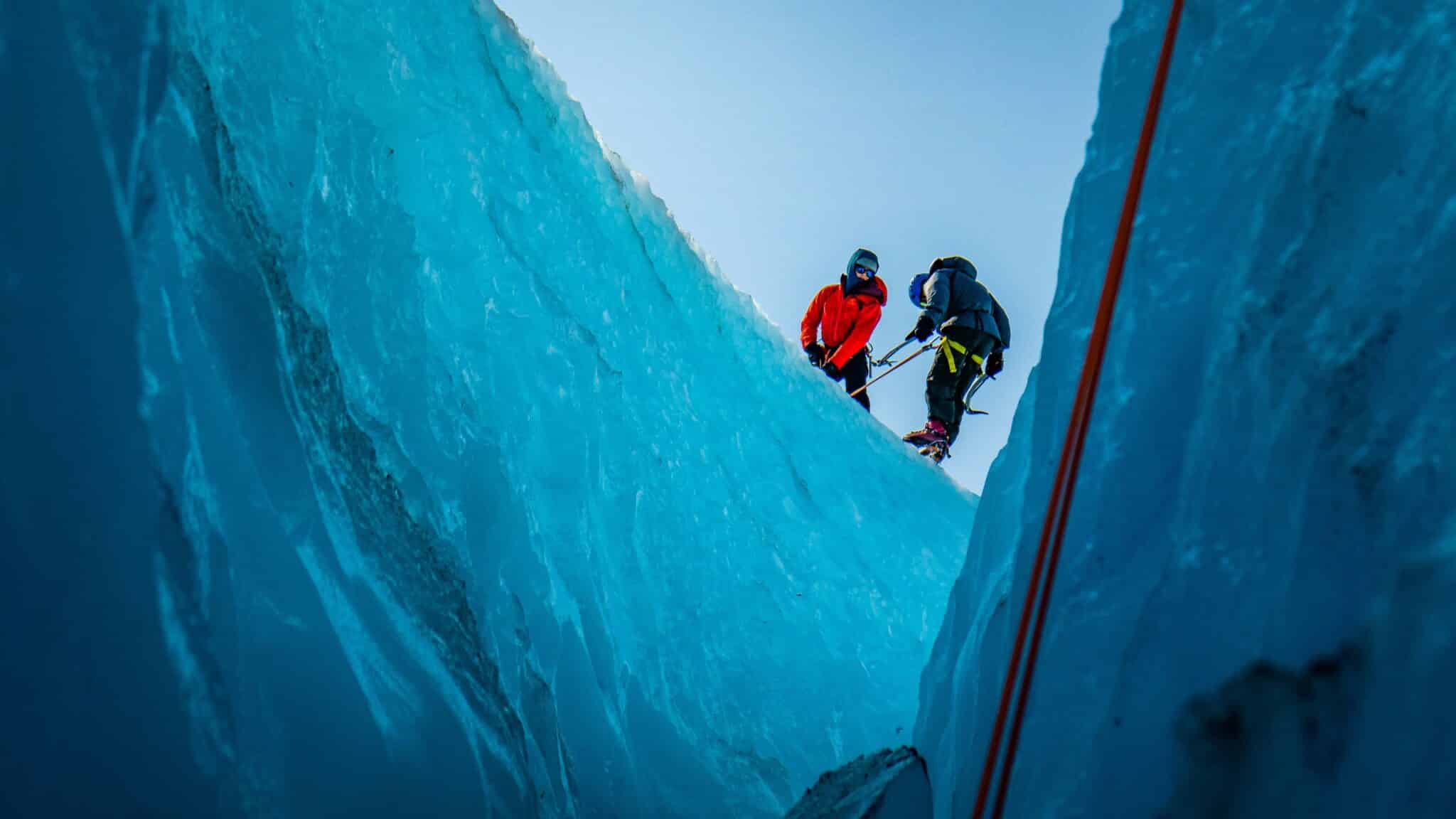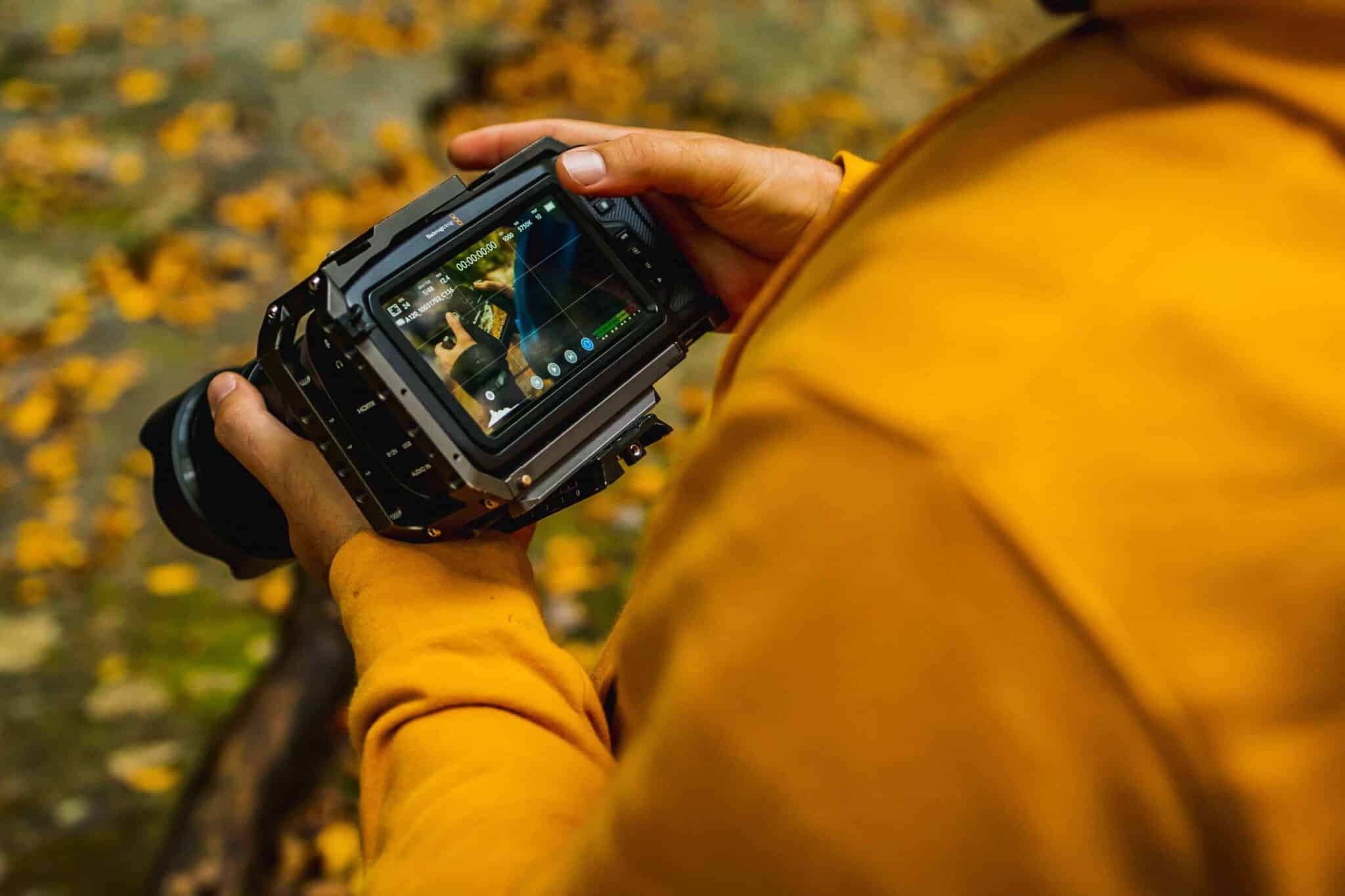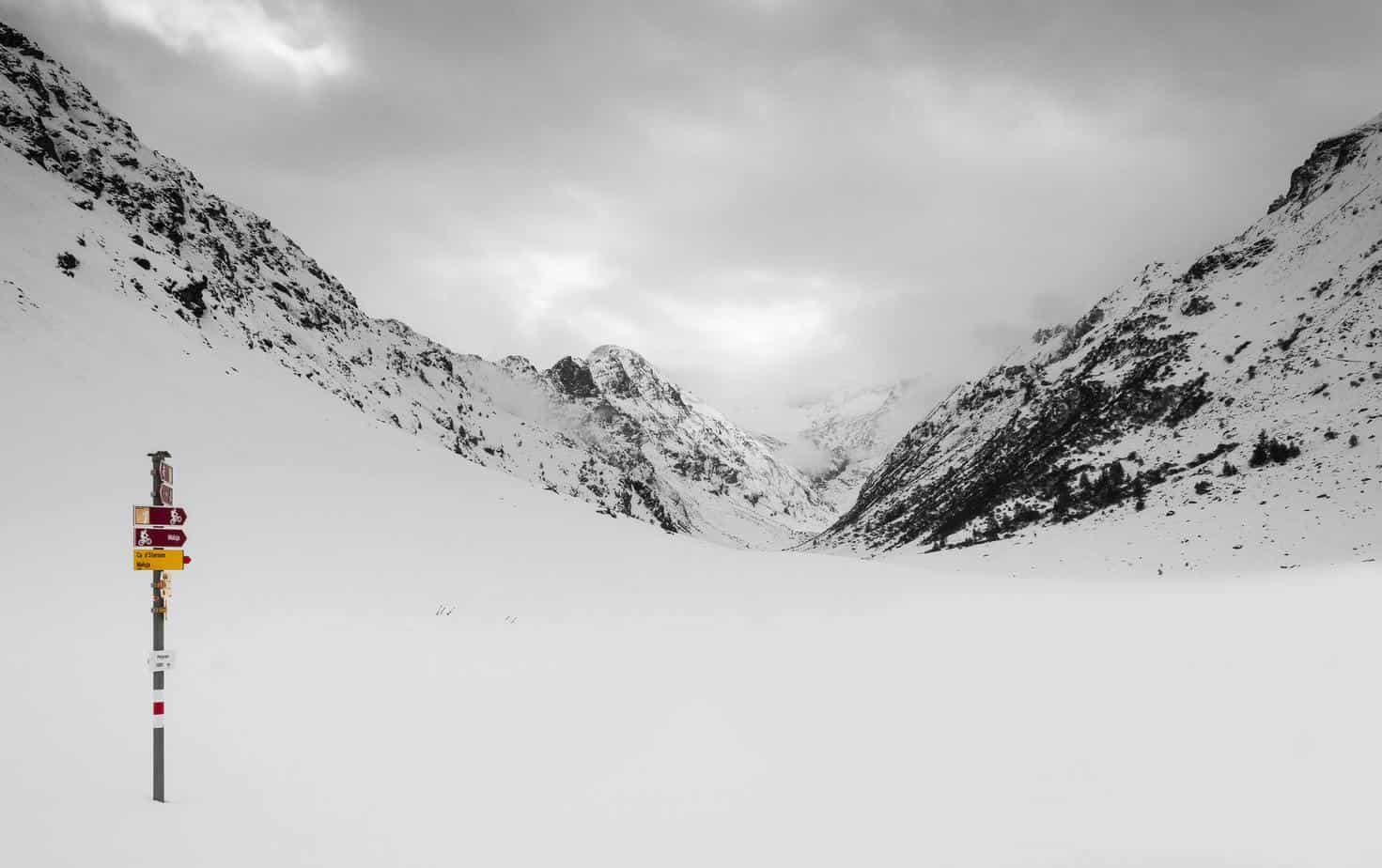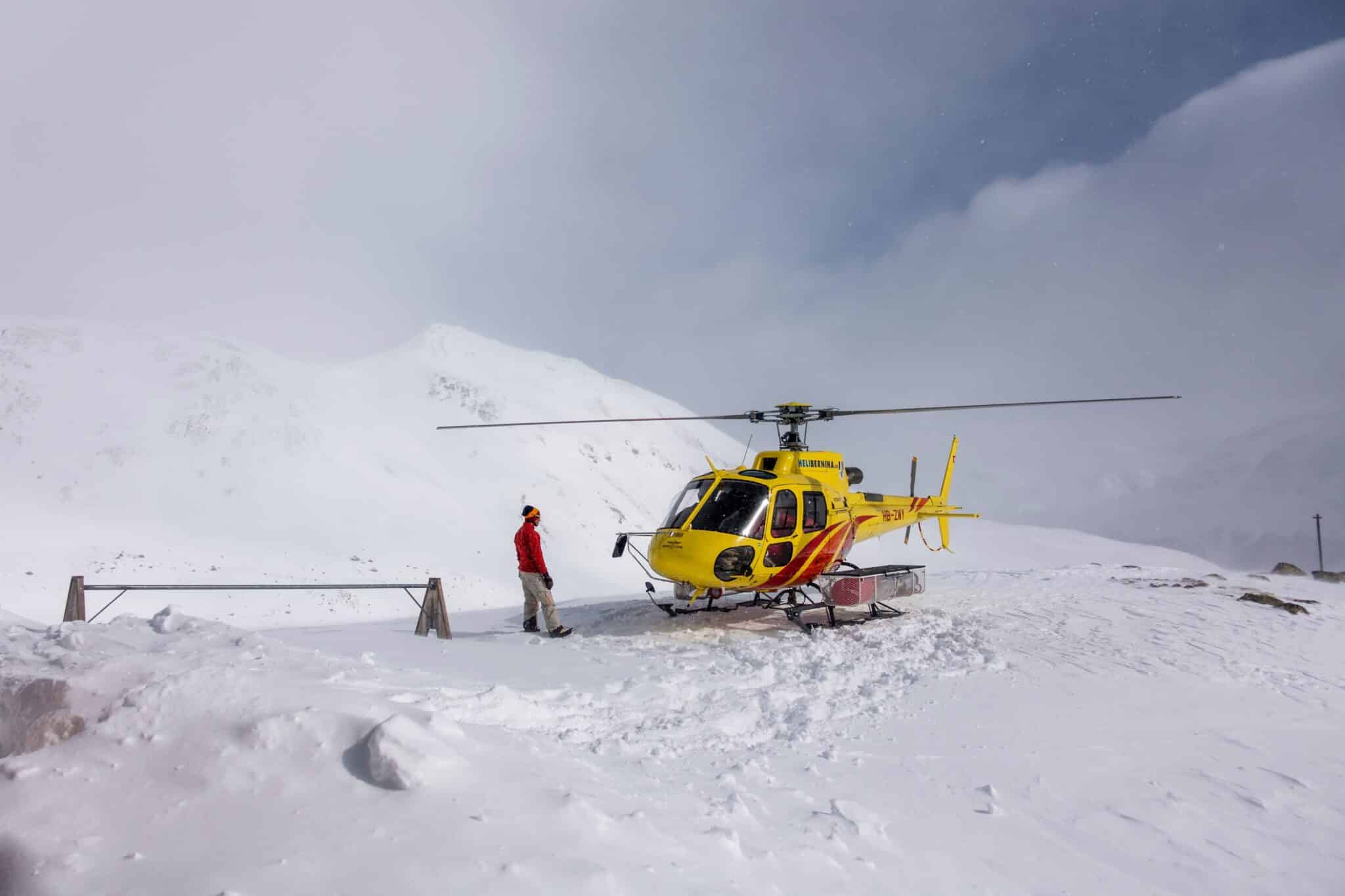Registering your tour company and getting the right licenses and permits to legitimately operate is actually a really big pain. Justin Wingerter of The Denver Post wrote an article in 2021 detailing just how messy the permitting process is.
Wingerter said, “Due to understaffing at the U.S. Forest Service and a cumbersome process, it can take several years and hundreds of work hours before Colorado guides receive a permit to take small groups fishing, hiking or do other recreational activities on federal lands.”
We all know how dangerous it can be climbing up a mountain. And it’s especially dangerous when an amateur risks their life on a mountain by themselves when they should really hire an expert. But, when agencies flat out ignore permit applications, you get beginners with very little experience climbing up dangerous 14ers like Blanca Peak and Little Bear Peak.
Earlier this year, we wrote about the SOAR Act, which is supposed to help streamline the guide permitting process and eliminate unnecessary headaches the current process causes.
Until it’s passed in Congress, we’ve outlined the typical steps hopeful tour operators can take to legitimize their outdoor guiding business, which includes: naming your business, registering your business, decide where you’re going to operate, and then get the permit for whatever area of land you’ll operate on (e.g. U.S. Forest Service, Bureau of Land Management, National Park Service, or U.S. Fish and Wildlife Service).

Step 1: Choose Your Business Structure And Location
Registering your tour guiding business may be the easiest part in all of this. The U.S. Small Business Administration (SBA) says to choose your location and business structure first so you know how to register your business.
1A. Different Business Structures
There are (more or less) five business structures you can choose from: limited liability company (LLC), corporation, sole proprietorship, partnership, or nonprofit corporation. Here’s an outline of what some of those business structures mean, according to SBA:
Sole Proprietorship (Individual)
- A Sole Proprietorship is a business owned and operated by a single individual.
- There are few legal requirements to meet to establish a sole proprietorship.
- If you’re operating your business under a name other than your own legal name, you must register a trade name.
- Sole Proprietor is the most common form of legal structure for new small businesses.
Corporation
- A corporation is a legal entity that exists separately from the people who create it.
- A corporation is owned by its shareholders and run by a board of directors elected by the shareholders.
- In a large corporation, the directors hire corporate officers to manage the day-to-day operations of the business. In a small corporation, the directors and the corporate officers are usually the same individual(s).
- Corporations are created by filing “Articles of Incorporation” with the Secretary of State and by adopting bylaws.
- There are certain formalities a corporation must adhere to, including:
- Procedures for annual shareholder meetings
- The election of the board of directors
- Maintenance of corporate records
- Adoption of bylaws
- Complete separation of personal and business finances
- Proper filings with the Secretary of State
- Although many of the requirements may seem unnecessary for a small corporation, they are important to preserve the corporate form.
Limited Liability Company
- An LLC combines the concepts of partnerships for tax purposes and corporations for liability purposes.
- LLCs are created by filing “Articles of Organization” with the Secretary of State.
- While similar, LLCs are NOT corporations. In an LLC, the owners are called members. The members may elect or hire a manager(s) to run the business. As in a corporation, the owner(s)/member(s) may elect themselves to be the manager(s).
General Partnership
- A General Partnership is a business owned by two or more individuals or other business entities.
- Although it is not required, it is strongly recommended that a general partnership prepare a written partnership agreement that outlines the business’ structure and each partner’s responsibilities.
- If the partnership owns real property, the partnership agreement should be filed in the county where the property is located. The agreement should be filed with the county office that keeps real estate records. Otherwise, there is no requirement to file the agreement with any state or federal agency.
- If the partners are operating the business under a name other than their own legal names, the business name must be registered as a trade name with the Colorado Secretary of State.
We checked out some tour companies in a few states to give you an idea of how other guiding companies structure themselves:
Colorado Examples:
Colorado Adventure Guides – LLC
Denver Mountain Guiding – LLC
Colorado Mountain School – LLC
Golden Mountain Guides – LLC
Montana Examples:
Montana Alpine Guides – Domestic Profit Corporation
Swan Mountain Outfitters – LLC
S&W Outfitters – Domestic Profit Corporation
Rock Climb Montana – Assumed Business Name, Individual
Utah Examples:
Southern Utah Guiding – LLC
Inspired Summit Adventures – LLC
Utah Mountain Adventures – Corporation – Domestic – Profit
Roam Industry – LLC
It’s clear that in our guiding company sample, most choose to become a Limited Liability Company (LLC). To be safe, make sure you talk to a professional lawyer to figure out what legal structure is best for you.
1B. Choose Your Tour Guiding Location(s)
Once you know what legal business structure you’re going to form, you need to decide what state you’ll operate in. If you’re going to operate in multiple states, you’ll need to register with every state’s Secretary of State’s office, a Business Bureau, or a Business Agency.
How do you know if you’re officially operating in a state? The SBA lists what to take into account when deciding whether you’re doing business in a state:
- Your business has a physical presence in the state
- You often have in-person meetings with clients in the state
- A significant portion of your company’s revenue comes from the state
- Any of your employees work in the state
- Some states allow you to register online, and some states make you file paper documents in person or through the mail.
If you have a physical presence in a state, your revenue’s coming from guiding in that state, and your employees work there, you have to register your business in that state.
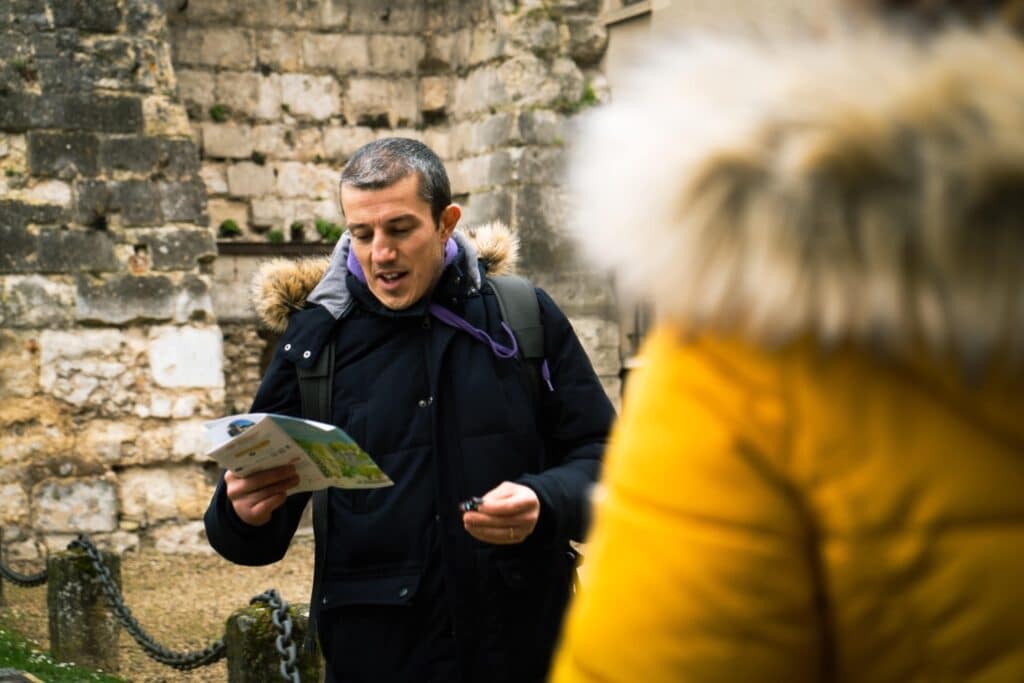
Step 2: Register With State, Federal, and Local Agencies
2A. Get A Registered Agent
Before you register your guiding business with the state departments you’ll be operating in, you’ll need a registered agent. It’s a fancy way to say it’s someone who receives all your legal documents and official paperwork on behalf of your company who lives in the state where you register.
You can take on this role yourself, but you can also use a registered agent service to do this job. If you want to hire a registered agent, go to Google and type in “Registered agent service in YOUR STATE.” Research the different companies, interview them, and verify they’re legit.
2B. File For Foreign Qualification
Some guiding businesses operate in several states, and if that’s the case, you might need to file for foreign qualification in the other states you operate.
Essentially, the state where you form your business is considered “domestic.” The other states you guide in will be considered as “foreign.” This qualification tells the state that a “foreign” business is active there.
For example, you form your business in Colorado, but you also take clients to Utah, Arizona, and New Mexico. Colorado is the domestic qualification, while Utah, Arizona, and New Mexico are all foreign qualifications.
The SBA says you need to file a Certificate of Authority with the state. Using our same example, you’d have to file a Certificate of Authority in Utah, Arizona, and New Mexico. Each state may also require a Certificate of Good Standing from your domestic state (Colorado, for example).
When you’ve decided on your name, business structure, location, registered agent, and any foreign qualifications you’ll need to apply for, you’re ready to file with the state(s).
Information you’ll need to file according to SBA:
- Business name
- Business location
- Ownership, management structure, or directors
- Registered agent information
- Number and value of shares (if you’re a corporation)
- The documents you need — and what goes in them — will vary based on your state and business structure.
2C. State Departments To Register Your Guiding Business:
States charge different fees, but usually it’ll cost less than $300 to register your business. Use the links below to register your tour company with the appropriate state.
List of State Departments
Alaska Department of Commerce, Community, and Economic Development
Connecticut Secretary of State
Kentucky One Stop Business Portal
Maryland Department of Commerce
Massachusetts Housing and Economic Development
Mississippi BOSS (Business One Stop Shop)
State of New Jersey Business Portal
Pennsylvania Department of State
Rhode Island Secretary of State
South Carolina Business One Stop (SCBOS)
South Dakota Secretary of State
Virginia State Corporation Commission
West Virginia One Stop Business Portal
2D. Registering With the Federal Government
It’s unlikely you’ll need to register your business with the federal government other than to get a federal tax ID. According to SBA, small businesses, like guiding companies, may register with the federal government for trademark protection or to get a tax-exempt status.
For trademark protection: You’ll need to file with the U.S. Patent and Trademark office once you’ve formed your business.
To create an S corp: File form 2553 with the IRS.
2E. Register With Local Agencies
According to SBA, you typically don’t have to register with a county or city government to form your business, but if your guiding business is an LLC, corporation, partnership, or nonprofit corporation, it’s possible.
Find out what cities and counties you’ll operate in, and visit the local government websites to determine if you’ll need to register with them or not. It’s important to verify if you need to register with local agencies since they determine registration, licensing, and permitting requirements.
2F. Stay Up To Date With Registration Requirements
If registering your tour guiding business wasn’t enough, you also have to keep up with your registration requirements, especially if you want to, you know, stay in business.
The SBA says that some states will make you provide reports soon after you register your business. And some require you to file Initial Reports or Tax Board registration within 30-90 days after your register with the state.
If this applies to you, reach out to your local tax office or franchise tax board.
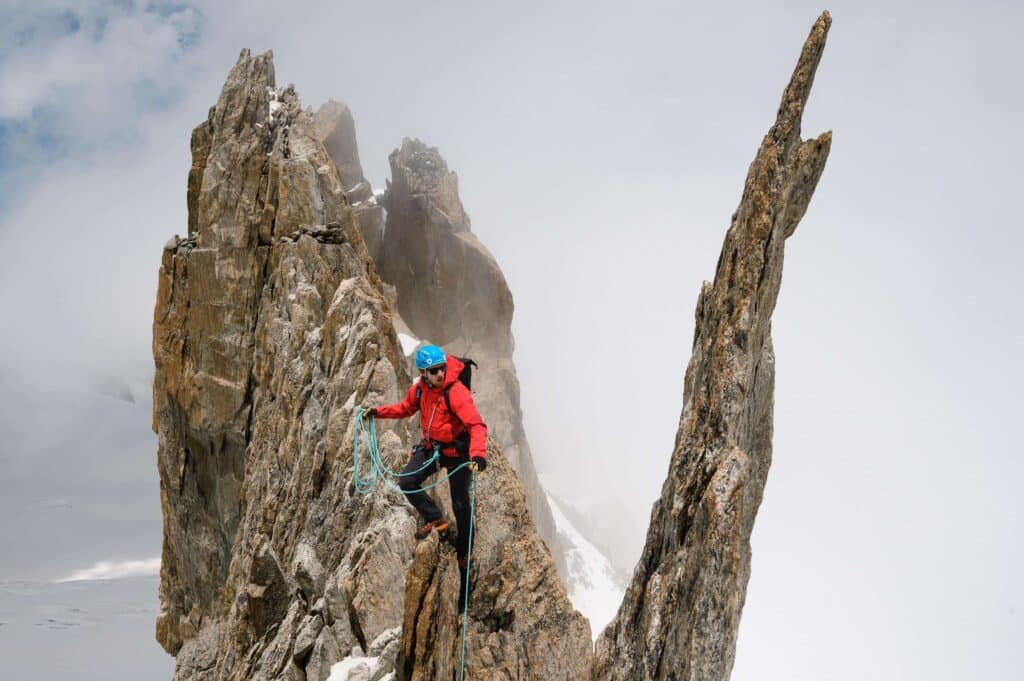
Step 3. Get Your Federal Lands Permit(s)
The permitting process for federal lands comes down to four different agencies: The Forest Service (FS), The Bureau of Land Management (BLM), The National Park Service (NPS), and The Fish and Wildlife Service (FWS).
Note that even though you’ll probably have to get your permitting through one of these federal land management agencies (FLMA), “states have their own set of authorities that govern how outfitters conduct their businesses, regardless of whether or not their operations primarily take place on federal lands. Compliance with state authorities is typically considered a prerequisite for any applicants applying for FLMA-issued commercial recreation permits,” says the Congressional Research Service (CRS).
Forest Service
Forest Service (FS) manages 193-million-acres of the National Forest System (NFS) and authorizes outdoor recreation as a use of NFS lands, among other uses and services.
Bureau of Land Management
Bureau of Land Management (BLM) manages public lands for varied purposes relating to the preservation, use, and development of the lands and natural resources (including recreation).
National Park Service
National Park Service (NPS) administers the National Park System for both recreational use and preservation of park resources.
Fish and Wildlife Service
Fish and Wildlife Service (FWS) manages lands within the National Wildlife Refuge System (NWRS), and authorizes and regulates recreation.
Special Cases:
For hunting and fishing, and possibly off-highway vehicles (OHV) trips “can be specific to a particular FLMA (i.e., agency-specific authorizing statutes listed above), to a particular species (e.g., the Migratory Bird Treaty Act), to a particular region (e.g., the Alaska National Interest Lands Conservation Act), or a combination of those factors,” according to CRS.
We’ll try our best to cover the four FLMAs, but we urge you to check with all possible agencies and get as much information as possible to get legitimate permits.
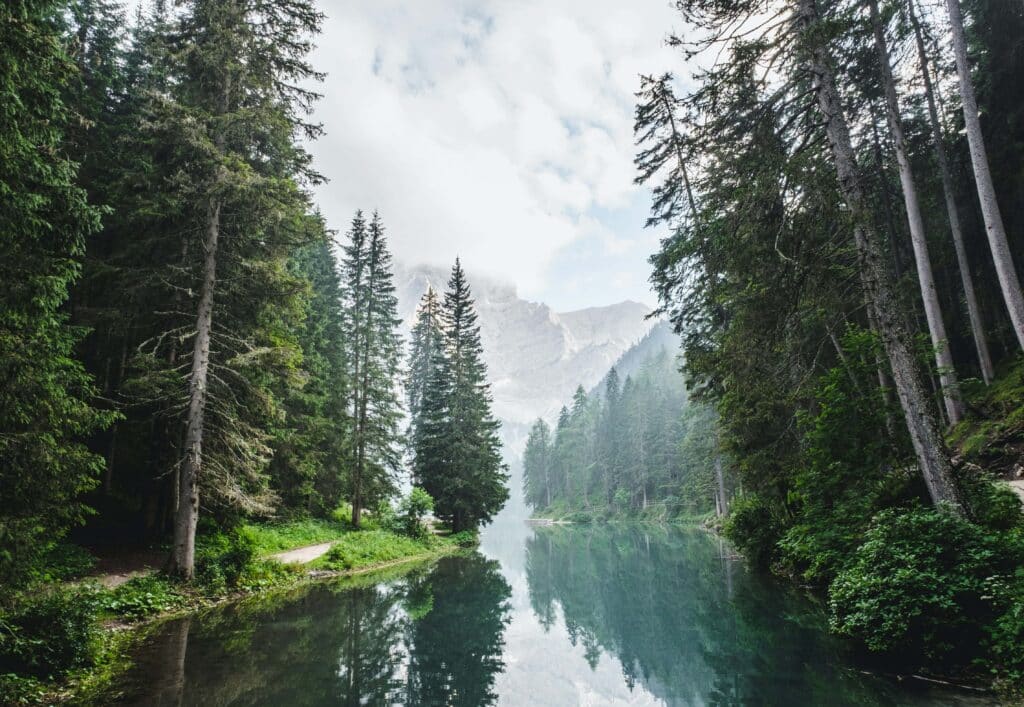
U.S. Forest Service Permitting Process
You’ll have to contact the Forest Service office in the area where you want to guide. They will determine whether your activity meets their pre-application screen requirements for special uses:
- The proposed use is consistent with federal, state, and local laws, regulations, orders, and policies that apply to national forests and grasslands;
- The proposed use is consistent or can be made consistent with the Forest Plan that established standards and guidelines for management of the land where the activity will take place;
- The proposed use will not create a serious and substantial risk to public health or safety;
- The proposed use will not create an exclusive or perpetual right of use or occupancy;
- The proposed use will not unreasonably conflict or interfere with administrative use by the Forest Service, other authorized existing uses, or uses of adjacent non-NFS lands;
- The proponent must not owe any fees to the Forest Service from a prior or existing special-use authorization;
- The proposed use does not involve gambling or providing of sexually-oriented commercial services, even if permitted under state law;
- The proposed use does not involve military or paramilitary training or exercises, unless such training is federally funded;
- The proposed use does not involve disposal of solid waste or disposal of radioactive or other hazardous substances.
- If you meet the initial screening requirements, the Forest Service administrator will provide guidance on what information will be required to complete your application. If your proposed event does not meet the screening requirements you will be notified that the proposal, as submitted, is denied.
A proposal that passes the initial screening proceeds to second-level screening. Your proposal will be accepted as an application if it meets all of the following:
- The proposed use would be consistent or compatible with the purposes for which the lands are managed; and
- The proposed use would be in the public interest; and
- The proponent is qualified; and
- The proponent can demonstrate technical or financial capability to undertake the use and fully comply with the terms and conditions of the permit; and
- There is someone authorized by the proponent to sign a permit or there is someone willing to accept the responsibility of the terms and conditions of the permit. Upon satisfactory passing of this screen the Forest Service will process your request
Planning Process
The U.S. Forest Service establishes needs, use, capacity, and allocation levels for guides and outfitters prior to issuing any new permits. When they conduct a “needs assessment,” they look at “accessibility, size, difficulty of the terrain, current levels of outfitting and guiding, and demographics of visitors to the area” (CRS).
If there’s a potential for adverse impacts on the land, then the Forest Service will conduct a “resource capacity analysis” to determine how much use the land can take without detrimental environmental and associated impacts.
After those two assessments, the Forest Service chooses who gets the permits. This gets split up between non-outfitted visitors and commercial guides and outfitting operations. It can also get divvied up between priority use and temporary use permits.
Permit Terms and Fees
The Forest Service authorizes guides and outfitters through two types of Special Use Authorizations: (1) Priority Use Permits and (2) Temporary Use Permits.
Priority Use Permits: Intended for ongoing commercial guide and outfitter operations and are issued for a period of up to 10 years (as long as no new businesses come in). If a new business also wants a certain, limited permit, the Forest Service can issue a prospectus to applicants and select the guide or outfitter competitively.
Selection criteria: The kind and quality of service proposed, applicant experience, verification of financial resources, and potential fees returned to the federal government.
Temporary Use Permits: For operators who need a one-time or short-term use of Forest Service Lands. They’re not eligible for renewal.
Fees: According to CRS, “commercial guides and outfitters operating under a priority use permit pay FS a landuse rental fee of approximately 3% of their adjusted gross revenue (defined by FS as “gross revenue and revenue additions less applicable exclusions”).”
Insurance and Liability
Forest Service policies require general liability insurance for “permittees based on the likelihood and severity of injury.” Minimum limits start at $300,000 aggregate coverage for low-risk activities (e.g., backpacking, Nordic skiing, nature hikes).
There isn’t a service-wide policy for the use of liability waivers for commercial recreation operators, but some Forest Service regions prevent permit holders to require their customers to sign liability waivers. Instead, some allow commercial outdoor guides to require visitor acknowledgement-of-risk (VAR) forms (they have to be approved by the Forest Service).
Check with your Forest Service Office to verify what insurance and liability they require and prevent.
National Forest District Offices Per State
Use this list to locate the office you need to contact in order to start the Forest Service permitting process:

Bureau of Land Management Permitting Process
The BLM outlines their application process as this:
- Verify that the activity is going to take place on public lands by contacting the local BLM Field Office in the area of activity
- The local BLM office will supply you with an application, checklist and local procedures
- 180 days prior to operation, file the application and items identified on the checklist
- The BLM will advise applicant of disapproval or request additional information within 30 days from receipt of application
- Documentation required may include an operating plan, a business plan, insurance, maps, other state or local licenses
- Contact your local BLM office for more information
Planning Process
The Bureau of Land Management (BLM) issues special recreation permits (SRP) on a first-come, first-served basis until they reach a certain amount of permits issued. If there are more applications than there are permits, BLM will issue them on a competitive basis.
Permit Terms and Fees
Same as the Forest Service, “commercial guides and outfitters operating under a BLM-issued SRP must pay an annual land-use rental fee. The use fee for commercial SRPs is approximately 3% of the permit holder’s adjusted gross revenue or a minimum yearly fee of $115, whichever is greater,” according to CRS.
Insurance and Liability
BLM requires commercial SRP holders to get liability insurance that the agency “judges sufficient to protect the public and the United States.”
In 2014, they set minimum requirements starting at “$600,000 aggregate coverage for low-risk events or activities (e.g., group camping, orienteering, backpacking).78 Moderate- and high-risk activities have annual aggregate minimums of $1 million and $2 million or greater, respectively” (CRS).
You also need to have insurance that covers $30,000 in property damage, at the minimum.
BLM doesn’t have any rules or policy regarding liability waivers for outdoor guides and outfitters with SRPs, but some BLM permittees take it upon themselves to require customers to sign a liability form or a VAR form, and some don’t require anything.
Bureau of Land Management Offices
California State Office (California and northwestern Nevada)
Eastern States State Office (31 states east of and bordering the Mississippi River)
Montana/Dakotas State Office (Montana, North Dakota, and South Dakota)
New Mexico State Office (New Mexico, Oklahoma, Texas, and Kansas)
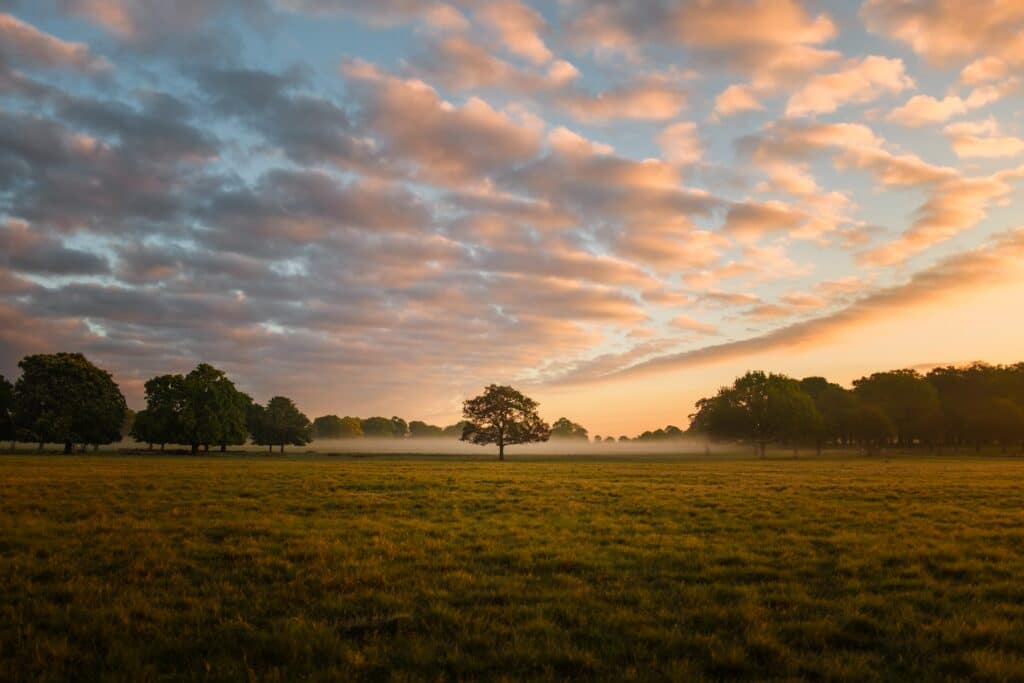
National Park Permitting Process
The National Park Service (NPS) issues commercial use authorizations and they’re short-term agreements between NPS and commercial guides and outfitters that typically begin and end outside of park boundaries.
Planning Process
The CRS says there are a number of factors that determine whether a CUA may be used for commercial guiding and outfitting or if you’ll need a concessions contract with the NPS. Their CUAs are limited to:
- Commercial operations with annual gross receipts of not more than $25,000 resulting from services originating and provided solely within a park unit
- The incidental use of park resources by operators that provide services originating and terminating outside of park boundaries
- Use by organized children’s camps, outdoor clubs, and nonprofit institutions (including backcountry use)
- Such other uses as the DOI Secretary deems appropriate.
Like FS and BLM permits, NPS permits require that activity have a minimal impact on park resources and values and it “must be consistent with the purposes for which the unit was established.”
Permit Terms and Fees
If you end up having to do a concession contract, they go through a public solicitation process first, but are typically awarded for a term of 10 years or less.
For guides and outfitters with a Commercial Use Authorization (CUA), you aren’t required to go through a public solicitation process but may end up getting issued by NPS if someone requests it. CUAs are issued for a term no longer than two years and don’t have a preferential right to renewal.
80% of your NPS Fee will go to visitor services and high-priority resource management activities. The other 20% of your NPS permit fee is “deposited in a special account to support activities throughout the park system.”
Insurance and Liability
NPS has a policy for “commercial liability insurance minimums for certain Category III (what most guides are authorized under) concessions contracts based on high-, medium-, and low-risk activities.”
NPS requires “a minimum of $1 million aggregate insurance coverage for low-risk activities (e.g., guided backpacking and hunting) for certain Category III guide and outfitter operations. Higher minimums apply for some activities classified as medium-risk (e.g., guided horse rides) and high-risk (e.g., guided mountaineering)” (CRS).
National Park Service Offices for Permits by State
Alabama
Birmingham Civil Rights National Monument
Freedom Riders National Monument
Horseshoe Bend National Military Park
Little River Canyon National Preserve
Natchez Trace National Scenic Trail
Russell Cave National Monument
Selma To Montgomery National Historic Trail
Trail Of Tears National Historic Trail
Alaska
Aleutian Islands World War II National Historic Area
Aniakchak National Monument and Preserve
Bering Land Bridge National Preserve
Cape Krusenstern National Monument
Denali National Park and Preserve
Gates Of The Arctic National Park and Preserve
Glacier Bay National Park and Preserve
Katmai National Park and Preserve
Klondike Gold Rush National Historical Park
Lake Clark National Park and Preserve
Sitka National Historical Park
American Samoa
Arizona
Canyon de Chelly National Monument
Casa Grande Ruins National Monument
Fort Bowie National Historic Site
Glen Canyon National Recreation Area
Grand Canyon-Parashant National Monument
Hubbell Trading Post National Historic Site
Juan Bautista de Anza National Historic Trail
Lake Mead National Recreation Area
Montezuma Castle National Monument
Old Spanish National Historic Trail
Organ Pipe Cactus National Monument
Petrified Forest National Park
Sunset Crater Volcano National Monument
Tumacácori National Historic Park
Arkansas
California
California National Historic Trail
Castle Mountains National Monument
César E. Chávez National Monument
Devils Postpile National Monument
Eugene O’Neill National Historic Site
Fort Point National Historic Site
Golden Gate National Recreation Area
John Muir National Historic Site
Juan Bautista de Anza National Historic Trail
Manzanar National Historic Site
Old Spanish National Historic Trail
Pony Express National Historic Trail
Port Chicago Naval Magazine National Memorial
Redwood National and State Parks
Rosie the Riveter WWII Home Front National Historical Park
San Francisco Maritime National Historical Park
Santa Monica Mountains National Recreation Area
Sequoia & Kings Canyon National Parks
Colorado
Bent’s Old Fort National Historic Site
Black Canyon Of The Gunnison National Park
California National Historic Trail
Curecanti National Recreation Area
Florissant Fossil Beds National Monument
Great Sand Dunes National Park and Preserve
Old Spanish National Historic Trail
Pony Express National Historic Trail
Sand Creek Massacre National Historic Site
Connecticut
Delaware
District of Columbia
African American Civil War Memorial
Belmont-Paul Women’s Equality National Monument
Civil War Defenses of Washington
Franklin Delano Roosevelt Memorial
Frederick Douglass National Historic Site
George Washington Memorial Parkway
Kenilworth Park & Aquatic Gardens
LBJ Memorial Grove on the Potomac
Martin Luther King, Jr. Memorial
Mary McLeod Bethune Council House National Historic Site
National Mall and Memorial Parks
Potomac Heritage National Scenic Trail
President’s Park (White House)
Star-Spangled Banner National Historic Trail
Washington-Rochambeau Revolutionary Route National Historic Trail
Florida
Georgia
Andersonville National Historic Site
Appalachian National Scenic Trail
Chattahoochee River National Recreation Area
Chickamauga & Chattanooga National Military Park
Cumberland Island National Seashore
Fort Frederica National Monument
Fort Pulaski National Monument
Jimmy Carter National Historic Park
Kennesaw Mountain National Battlefield Park
Martin Luther King, Jr. National Historic Park
Hawaii
Idaho
California National Historic Trail
City Of Rocks National Reserve
Craters Of The Moon National Monument and Preserve
Hagerman Fossil Beds National Monument
Ice Age Floods National Geologic Trail
Lewis & Clark National Historic Trail
Minidoka National Historic Site
Nez Perce National Historic Park
Illinois
Indiana
Iowa
Kansas
Brown v. Board of Education National Historic Park
California National Historic Trail
Fort Larned National Historic Site
Fort Scott National Historic Site
Lewis & Clark National Historic Trail
Nicodemus National Historic Site
Oregon National Historic Trail
Pony Express National Historic Trail
Kentucky
Louisiana
Maine
Maryland
Appalachian National Scenic Trail
Assateague Island National Seashore
Captain John Smith Chesapeake National Historic Trail
Chesapeake & Ohio Canal National Historical Park
Civil War Defenses of Washington
Clara Barton National Historic Site
Fort McHenry National Monument and Historic Shrine
George Washington Memorial Parkway
Hampton National Historic Site
Harpers Ferry National Historical Park
Harriet Tubman Underground Railroad National Historical Park
Oxon Cove Park & Oxon Hill Farm
Potomac Heritage National Scenic Trail
Star-Spangled Banner National Historic Trail
Thomas Stone National Historic Site
Washington-Rochambeau Revolutionary Route National Historic Trail
Massachusetts
Appalachian National Scenic Trail
Blackstone River Valley National Historic Park
Boston African American National Historic Site
Boston Harbor Islands National Recreation Area
Frederick Law Olmsted National Historic Site
John Fitzgerald Kennedy National Historic Site
Longfellow House Washington’s Headquarters National Historic Site
Minute Man National Historical Park
New Bedford Whaling National Historical Park
New England National Scenic Trail
Salem Maritime National Historic Site
Saugus Iron Works National Historic Site
Springfield Armory National Historic Site
Washington-Rochambeau Revolutionary Route National Historic Trail
Michigan
Minnesota
Mississippi
Missouri
California National Historic Trail
George Washington Carver National Monument
Harry S Truman National Historic Site
Lewis & Clark National Historic Trail
Oregon National Historic Trail
Ozark National Scenic Riverways
Pony Express National Historic Trail
Santa Fe National Historic Trail
Ste. Geneviève National Historical Park
Trail Of Tears National Historic Trail
Montana
Nebraska
Agate Fossil Beds National Monument
California National Historic Trail
Homestead National Historical Park
Lewis & Clark National Historic Trail
Missouri National Recreational River
Mormon Pioneer National Historic Trail
Niobrara National Scenic River
Oregon National Historic Trail
Nevada
New Jersey
Appalachian National Scenic Trail
Delaware Water Gap National Recreation Area
Ellis Island Part of the Statue of Liberty National Monument
Gateway National Recreation Area
Lower Delaware National Wild and Scenic River
Morristown National Historical Park
New Jersey Pinelands National Reserve
Paterson Great Falls National Historical Park
Thomas Edison National Historical Park
Washington-Rochambeau Revolutionary Route National Historic Trail
New Mexico
Capulin Volcano National Monument
Carlsbad Caverns National Park
Chaco Culture National Historical Park
El Camino Real de Tierra Adentro National Historic Trail
Gila Cliff Dwellings National Monument
Manhattan Project National Historical Park
Old Spanish National Historic Trail
Pecos National Historical Park
Salinas Pueblo Missions National Monument
Santa Fe National Historic Trail
New York
African Burial Ground National Monument
Appalachian National Scenic Trail
Captain John Smith Chesapeake National Historic Trail
Castle Clinton National Monument
Eleanor Roosevelt National Historic Site
Ellis Island Part of the Statue of Liberty National Monument
Federal Hall National Memorial
Fort Stanwix National Monument
Gateway National Recreation Area
General Grant National Memorial
Governors Island National Monument
Hamilton Grange National Memorial
Harriet Tubman National Historic Park
Home Of Franklin D Roosevelt National Historic Site
Lower East Side Tenement Museum National Historic Site
Martin Van Buren National Historic Site
National Parks of New York Harbor
North Country National Scenic Trail
Sagamore Hill National Historic Site
Saint Paul’s Church National Historic Site
Saratoga National Historical Park
Statue Of Liberty National Monument
Theodore Roosevelt Birthplace National Historic Site
Theodore Roosevelt Inaugural National Historic Site
Thomas Cole National Historic Site
Upper Delaware Scenic and Recreational River
Vanderbilt Mansion National Historic Site
Washington-Rochambeau Revolutionary Route National Historic Trail
North Carolina
Appalachian National Scenic Trail
Cape Hatteras National Seashore
Cape Lookout National Seashore
Carl Sandburg Home National Historic Site
Fort Raleigh National Historic Site
Great Smoky Mountains National Park
Guilford Courthouse National Military Park
Moores Creek National Battlefield
Overmountain Victory National Historic Trail
North Dakota
Ohio
Charles Young Buffalo Soldiers National Monument
Dayton Aviation Heritage National Historical Park
First Ladies National Historic Site
Hopewell Culture National Historical Park
James A Garfield National Historic Site
Lewis & Clark National Historic Trail
North Country National Scenic Trail
Oklahoma
Oregon
Pennsylvania
Allegheny Portage Railroad National Historic Site
Appalachian National Scenic Trail
Captain John Smith Chesapeake National Historic Trail
Delaware Water Gap National Recreation Area
Edgar Allan Poe National Historic Site
Eisenhower National Historic Site
First State National Historical Park
Fort Necessity National Battlefield
Friendship Hill National Historic Site
Gettysburg National Military Park
Gloria Dei Church National Historic Site
Hopewell Furnace National Historic Site
Independence National Historical Park
Johnstown Flood National Memorial
Lewis & Clark National Historic Trail
Lower Delaware National Wild and Scenic River
North Country National Scenic Trail
Potomac Heritage National Scenic Trail
Steamtown National Historic Site
Thaddeus Kosciuszko National Memorial
Upper Delaware Scenic and Recreational River
Valley Forge National Historical Park
Washington-Rochambeau Revolutionary Route National Historic Trail
Puerto Rico
Rhode Island
South Carolina
South Dakota
Tennessee
Andrew Johnson National Historic Site
Big South Fork National River and Recreation Area
Chickamauga & Chattanooga National Military Park
Cumberland Gap National Historical Park
Fort Donelson National Battlefield
Great Smoky Mountains National Park
Manhattan Project National Historical Park
Natchez Trace National Scenic Trail
Overmountain Victory National Historic Trail
Texas
Alibates Flint Quarries National Monument
Amistad National Recreation Area
El Camino Real de los Tejas National Historic Trail
El Camino Real de Tierra Adentro National Historic Trail
Fort Davis National Historic Site
Guadalupe Mountains National Park
Lake Meredith National Recreation Area
Lyndon B Johnson National Historical Park
Padre Island National Seashore
Palo Alto Battlefield National Historical Park
Rio Grande Wild and Scenic River
Utah
California National Historic Trail
Cedar Breaks National Monument
Glen Canyon National Recreation Area
Golden Spike National Historical Park
Mormon Pioneer National Historic Trail
Natural Bridges National Monument
Old Spanish National Historic Trail
Pony Express National Historic Trail
Rainbow Bridge National Monument
Vermont
Virgin Islands
Virginia
Appalachian National Scenic Trail
Appomattox Court House National Historic Park
Arlington House, The Robert E. Lee Memorial
Assateague Island National Seashore
Booker T Washington National Monument
Cape Henry Memorial Part of Colonial National Historical Park
Captain John Smith Chesapeake National Historic Trail
Cedar Creek & Belle Grove National Historical Park
Civil War Defenses of Washington
Colonial National Historical Park
Cumberland Gap National HIstorical Park
Fredericksburg & Spotsylvania National Military Park
George Washington Memorial Parkway
George Washington Birthplace National Monument
Harpers Ferry National Historical Park
Historic Jamestowne Part of Colonial National Historical Park
Maggie L Walker National Historic Site
Manassas National Battlefield Park
Overmountain Victory National Historic Trail
Petersburg National Battlefield
Potomac Heritage National Scenic Trail
Richmond National Battlefield Park
Star-Spangled Banner National Historic Trail
Washington-Rochambeau Revolutionary Route National Historic Trail
Wolf Trap National Park for the Performing Arts
Yorktown Battlefield Part of Colonial National Historical Park
Washington
Ebey’s Landing National Historical Reserve
Fort Vancouver National Historic Site
Ice Age Floods National Geologic Trail
Klondike Gold Rush – Seattle Unit National Historical Park
Lake Roosevelt National Recreation Area
Lewis and Clark National Historic Trail
Lewis and Clark National Historical Park
Manhattan Project National Historical Park
Minidoka National Historic Site
Nez Perce National Historical Park
Oregon National Historic Trail
San Juan Island National Historical Park
West Virginia
Wisconsin
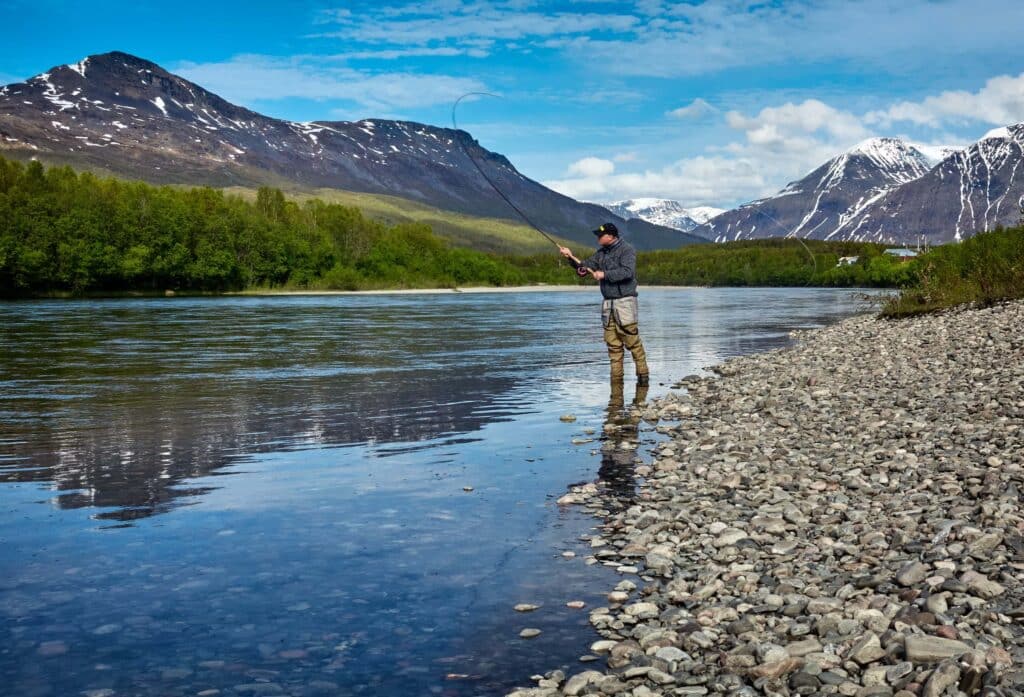
U.S. Fish and Wildlife Service
The U.S. Fish and Wildlife Service outlines who needs to apply for a commercial activities special use permit:
- Commercial activities such as guiding hunters, anglers, or other outdoor users
- Commercial filming (audio, video, and photographic products of a monetary value)
- Agriculture (haying, grazing, crop planting, logging, and other agricultural products)
- Cabins (see also the General Special Use Application and Permit described below)
- Trapping
While the U.S. Fish and Wildlife Services (FWS) doesn’t uniformly report commercial recreation permit numbers, they do issue fewer permits than the other federal land management agencies.
Planning Process
Wildlife-dependent recreation (e.g. “hunting, fishing, wildlife observation and photography, or environmental education and interpretation”) is considered a legitimate, priority public use. If you’re guiding at or on a refuge, it can be considered compatible if it directly supports “a priority general public use, if it is specifically authorized by statute, or if it is a “refuge management economic activity” (CRS).
Permit Terms and Fees
FWS issues permits for a specific period depending on the type and location of the use or service provided. Also, refuge-specific special conditions may be required for a permit.
FWS differentiates from the FS, BLM, and NPS because it doesn’t have a specific policy to assess fees for commercial recreation permits. Instead, they have a broad policy which considers “cost recovery and fair market value when providing goods, resources, or services to a non-FWS entity” (CRS).
Insurance and Liability
While FWS doesn’t have required general liability requirements for commercial guides and outfitters, some individual refuges have minimum liability requirements for their station, based on the type of use and local conditions.
National Wildlife Refuge Offices To Send Permit Applications
You’ll need to contact the specific refuge headquarters office where the activity is going to be conducted to find out what you need exactly for a permit on a National Wildlife Refuge. You can find the Commercial Special Use Application Form here.
Alabama
Bon Secour National Wildlife Refuge
Cahaba River National Wildlife Refuge
Choctaw National Wildlife Refuge
Eufaula National Wildlife Refuge
Fern Cave National Wildlife Refuge
Key Cave National Wildlife Refuge
Mountain Longleaf National Wildlife Refuge
Sauta Cave National Wildlife Refuge
Alaska
Alaska Maritime National Wildlife Refuge
Alaska Peninsula National Wildlife Refuge
Arctic National Wildlife Refuge
Becharof National Wildlife Refuge
Innoko National Wildlife Refuge
Izembek National Wildlife Refuge
Kanuti National Wildlife Refuge
Kenai National Wildlife Refuge
Kodiak National Wildlife Refuge
Koyukuk National Wildlife Refuge
Nowitna National Wildlife Refuge
Selawik National Wildlife Refuge
Tetlin National Wildlife Refuge
Togiak National Wildlife Refuge
American Samoa
Arizona
Arkansas
Bald Knob National Wildlife Refuge
Big Lake National Wildlife Refuge
Cache River National Wildlife Refuge
Felsenthal National Wildlife Refuge
Holla Bend National Wildlife Refuge
Logan Cave National Wildlife Refuge
Overflow National Wildlife Refuge
Pond Creek National Wildlife Refuge
California
Antioch Dunes National Wildlife Refuge
Bitter Creek National Wildlife Refuge
Blue Ridge National Wildlife Refuge
Butte Sink Wildlife Management Area
Castle Rock National Wildlife Refuge
Clear Lake National Wildlife Refuge
Coachella Valley National Wildlife Refuge
Colusa National Wildlife Refuge
Delevan National Wildlife Refuge
Don Edwards San Francisco Bay National Wildlife Refuge
Ellicott Slough National Wildlife Refuge
Farallon National Wildlife Refuge
Grasslands Wildlife Management Area
Guadalupe-Nipomo Dunes National Wildlife Refuge
Hopper Mountain National Wildlife Refuge
Humboldt Bay National Wildlife Refuge
Lower Klamath National Wildlife Refuge
Marin Islands National Wildlife Refuge
Merced National Wildlife Refuge
Modoc National Wildlife Refuge
North Central Valley Wildlife Management Area
Pixley National Wildlife Refuge
Sacramento National Wildlife Refuge
Sacramento River National Wildlife Refuge
Salinas River National Wildlife Refuge
San Diego Bay National Wildlife Refuge
San Diego National Wildlife Refuge
San Joaquin River National Wildlife Refuge
San Luis National Wildlife Refuge
San Pablo Bay National Wildlife Refuge
Seal Beach National Wildlife Refuge
Sonny Bono Salton Sea National Wildlife Refuge
Stone Lakes National Wildlife Refuge
Sutter National Wildlife Refuge
Tijuana Slough National Wildlife Refuge
Colorado
Connecticut
Florida
Archie Carr National Wildlife Refuge
Arthur R. Marshall Loxahatchee National Wildlife Refuge
Caloosahatchee National Wildlife Refuge
Cedar Keys National Wildlife Refuge
Chassahowitzka National Wildlife Refuge
Crocodile Lake National Wildlife Refuge
Crystal River National Wildlife Refuge
Egmont Key National Wildlife Refuge
Everglades Headwaters National Wildlife Refuge and Conservation Area
Florida Panther National Wildlife Refuge
Great White Heron National Wildlife Refuge
Hobe Sound National Wildlife Refuge
Island Bay National Wildlife Refuge
J.N. ‘Ding’ Darling National Wildlife Refuge
Key Deer National Wildlife Refuge
Key West National Wildlife Refuge
Lake Wales Ridge National Wildlife Refuge
Lake Woodruff National Wildlife Refuge
Lower Suwannee National Wildlife Refuge
Matlacha Pass National Wildlife Refuge
Merritt Island National Wildlife Refuge
Passage Key National Wildlife Refuge
Pelican Island National Wildlife Refuge
Pine Island National Wildlife Refuge
Pinellas National Wildlife Refuge
St. Johns National Wildlife Refuge
St. Marks National Wildlife Refuge
Georgia
Hawaii
Hakalau Forest National Wildlife Refuge
Hanalei National Wildlife Refuge
Hawaiian Islands National Wildlife Refuge
Hulē‘ia National Wildlife Refuge
James Campbell National Wildlife Refuge
Kakahai‘a National Wildlife Refuge
Kealia Pond National Wildlife Refuge
Kilauea Point National Wildlife Refuge
Idaho
Illinois
Chautauqua National Wildlife Refuge
Crab Orchard National Wildlife Refuge
Cypress Creek National Wildlife Refuge
Emiquon National Wildlife Refuge
Hackmatack National Wildlife Refuge
Kankakee National Wildlife Refuge and Conservation Area
Meredosia National Wildlife Refuge
Indiana
Iowa
Kansas
Louisiana
Atchafalaya National Wildlife Refuge
Bayou Cocodrie National Wildlife Refuge
Bayou Sauvage National Wildlife Refuge
Bayou Teche National Wildlife Refuge
Big Branch Marsh National Wildlife Refuge
Black Bayou Lake National Wildlife Refuge
Bogue Chitto National Wildlife Refuge
Breton National Wildlife Refuge
Cameron Prairie National Wildlife Refuge
Cat Island National Wildlife Refuge
Catahoula National Wildlife Refuge
D’Arbonne National Wildlife Refuge
Delta National Wildlife Refuge
Grand Cote National Wildlife Refuge
Handy Brake National Wildlife Refuge
Lacassine National Wildlife Refuge
Lake Ophelia National Wildlife Refuge
Louisiana Wetland Management District
Mandalay National Wildlife Refuge
Red River National Wildlife Refuge
Sabine National Wildlife Refuge
Shell Keys National Wildlife Refuge
Maine
Aroostook National Wildlife Refuge
Carlton Pond Waterfowl Production Area
Cross Island National Wildlife Refuge
Franklin Island National Wildlife Refuge
Moosehorn National Wildlife Refuge
Petit Manan National Wildlife Refuge
Pond Island National Wildlife Refuge
Rachel Carson National Wildlife Refuge
Maryland
Massachusetts
Assabet River National Wildlife Refuge
Great Meadows National Wildlife Refuge
Mashpee National Wildlife Refuge
Massasoit National Wildlife Refuge
Monomoy National Wildlife Refuge
Nantucket National Wildlife Refuge
Nomans Land Island National Wildlife Refuge
Oxbow National Wildlife Refuge
Parker River National Wildlife Refuge
Michigan
Minnesota
Agassiz National Wildlife Refuge
Big Stone National Wildlife Refuge
Big Stone Wetland Management District
Crane Meadows National Wildlife Refuge
Detroit Lakes Wetland Management District
Fergus Falls Wetland Management District
Glacial Ridge National Wildlife Refuge
Hamden Slough National Wildlife Refuge
Litchfield Wetland Management District
Mille Lacs National Wildlife Refuge
Minnesota Valley National Wildlife Refuge
Minnesota Valley Wetland Management District
Morris Wetland Management District
Northern Tallgrass Prairie National Wildlife Refuge
Rice Lake National Wildlife Refuge
Rydell National Wildlife Refuge
Sherburne National Wildlife Refuge
Tamarac National Wildlife Refuge
Mississippi
Coldwater River National Wildlife Refuge
Dahomey National Wildlife Refuge
Grand Bay National Wildlife Refuge
Hillside National Wildlife Refuge
Holt Collier National Wildlife Refuge
Mathews Brake National Wildlife Refuge
Mississippi Sandhill Crane National Wildlife Refuge
Morgan Brake National Wildlife Refuge
Panther Swamp National Wildlife Refuge
Sam D. Hamilton Noxubee National Wildlife Refuge
St. Catherine Creek National Wildlife Refuge
Tallahatchie National Wildlife Refuge
Missouri
Montana
Benton Lake National Wildlife Refuge
Benton Lake Wetland Management District
Black Coulee National Wildlife Refuge
Bowdoin National Wildlife Refuge
Charles M. Russell National Wildlife Refuge
Creedman Coulee National Wildlife Refuge
Grass Lake National Wildlife Refuge
Hailstone National Wildlife Refuge
Hewitt Lake National Wildlife Refuge
Lake Mason National Wildlife Refuge
Lake Thibadeau National Wildlife Refuge
Lamesteer National Wildlife Refuge
Lee Metcalf National Wildlife Refuge
Lost Trail National Wildlife Refuge
Medicine Lake National Wildlife Refuge
Ninepipe National Wildlife Refuge
Northwest Montana Wetland Management District
Pablo National Wildlife Refuge
Red Rock Lakes National Wildlife Refuge
Swan River National Wildlife Refuge
Nebraska
Nevada
New Hampshire
New Jersey
New Mexico
New York
Amagansett National Wildlife Refuge
Conscience Point National Wildlife Refuge
Elizabeth A. Morton National Wildlife Refuge
Iroquois National Wildlife Refuge
Montezuma National Wildlife Refuge
Oyster Bay National Wildlife Refuge
Seatuck National Wildlife Refuge
Shawangunk Grasslands National Wildlife Refuge
North Carolina
Alligator River National Wildlife Refuge
Cedar Island National Wildlife Refuge
Currituck National Wildlife Refuge
Mackay Island National Wildlife Refuge
Mattamuskeet National Wildlife Refuge
Mountain Bogs National Wildlife Refuge
Pea Island National Wildlife Refuge
Pee Dee National Wildlife Refuge
Pocosin Lakes National Wildlife Refuge
North Dakota
Appert Lake National Wildlife Refuge
Ardoch National Wildlife Refuge
Arrowwood National Wildlife Refuge
Arrowwood Wetland Management District
Audubon National Wildlife Refuge
Audubon Wetland Management District
Bone Hill Creek National Wildlife Refuge
Brumba National Wildlife Refuge
Buffalo Lake National Wildlife Refuge (North Dakota)
Canfield Lake National Wildlife Refuge
Chase Lake National Wildlife Refuge
Chase Lake Wetland Management District
Cottonwood Lake National Wildlife Refuge
Crosby Wetland Management District
Dakota Lake National Wildlife Refuge
Des Lacs National Wildlife Refuge
Devils Lake Wetland Management District
Florence Lake National Wildlife Refuge
Half-Way Lake National Wildlife Refuge
Hiddenwood National Wildlife Refuge
Hobart Lake National Wildlife Refuge
Hutchinson Lake National Wildlife Refuge
Johnson Lake National Wildlife Refuge
Kellys Slough National Wildlife Refuge
Kulm Wetland Management District
Lake Alice National Wildlife Refuge
Lake George National Wildlife Refuge
Lake Ilo National Wildlife Refuge
Lake Nettie National Wildlife Refuge
Lake Otis National Wildlife Refuge
Lake Zahl National Wildlife Refuge
Lambs Lake National Wildlife Refuge
Little Goose National Wildlife Refuge
Long Lake National Wildlife Refuge
Long Lake Wetland Management District
Lords Lake National Wildlife Refuge
Lostwood National Wildlife Refuge
Lostwood Wetland Management District
Maple River National Wildlife Refuge
McLean National Wildlife Refuge
Pleasant Lake National Wildlife Refuge
Pretty Rock National Wildlife Refuge
Rabb Lake National Wildlife Refuge
Rock Lake National Wildlife Refuge
Rose Lake National Wildlife Refuge
School Section Lake National Wildlife Refuge
Shell Lake National Wildlife Refuge
Sibley Lake National Wildlife Refuge
Silver Lake National Wildlife Refuge
Slade National Wildlife Refuge
Snyder Lake National Wildlife Refuge
Springwater National Wildlife Refuge
Stewart Lake National Wildlife Refuge
Stoney Slough National Wildlife Refuge
Storm Lake National Wildlife Refuge
Stump Lake National Wildlife Refuge
Sunburst Lake National Wildlife Refuge
Tewaukon National Wildlife Refuge
Tewaukon Wetland Management District
Tomahawk National Wildlife Refuge
Upper Souris National Wildlife Refuge
Valley City Wetland Management District
White Lake National Wildlife Refuge
White Horse Hill National Game Preserve
Wild Rice Lake National Wildlife Refuge
Ohio
Oklahoma
Oregon
Ankeny National Wildlife Refuge
Bandon Marsh National Wildlife Refuge
Baskett Slough National Wildlife Refuge
Bear Valley National Wildlife Refuge
Cape Meares National Wildlife Refuge
Cold Springs National Wildlife Refuge
Deer Flat National Wildlife Refuge
Hart Mountain National Antelope Refuge
Julia Butler Hansen Refuge for the Columbian White-Tailed Deer
Klamath Marsh National Wildlife Refuge
Lewis and Clark National Wildlife Refuge
Lower Klamath National Wildlife Refuge
Malheur National Wildlife Refuge
McKay Creek National Wildlife Refuge
Nestucca Bay National Wildlife Refuge
Oregon Islands National Wildlife Refuge
Sheldon National Wildlife Refuge
Siletz Bay National Wildlife Refuge
Three Arch Rocks National Wildlife Refuge
Tualatin River National Wildlife Refuge
Umatilla National Wildlife Refuge
Upper Klamath National Wildlife Refuge
Pennsylvania
Puerto Rico
Rhode Island
South Carolina
South Dakota
Bear Butte National Wildlife Refuge
Huron Wetland Management District
Karl E. Mundt National Wildlife Refuge
Lacreek National Wildlife Refuge
Lake Andes National Wildlife Refuge
Lake Andes Wetland Management District
Madison Wetland Management District
Sand Lake National Wildlife Refuge
Sand Lake Wetland Management District
Tennessee
Texas
Anahuac National Wildlife Refuge
Aransas National Wildlife Refuge
Attwater Prairie Chicken National Wildlife Refuge
Balcones Canyonlands National Wildlife Refuge
Big Boggy National Wildlife Refuge
Brazoria National Wildlife Refuge
Buffalo Lake National Wildlife Refuge
Caddo Lake National Wildlife Refuge
Hagerman National Wildlife Refuge
Laguna Atascosa National Wildlife Refuge
Lower Rio Grande Valley National Wildlife Refuge
McFaddin National Wildlife Refuge
Muleshoe National Wildlife Refuge
Neches River National Wildlife Refuge
San Bernard National Wildlife Refuge
Santa Ana National Wildlife Refuge
Utah
Virginia
Back Bay National Wildlife Refuge
Chincoteague National Wildlife Refuge
Eastern Shore of Virginia National Wildlife Refuge
Elizabeth Hartwell Mason Neck National Wildlife Refuge
Featherstone National Wildlife Refuge
Fisherman Island National Wildlife Refuge
Great Dismal Swamp National Wildlife Refuge
James River National Wildlife Refuge
Nansemond National Wildlife Refuge
Occoquan Bay National Wildlife Refuge
Plum Tree Island National Wildlife Refuge
Presquile National Wildlife Refuge
Washington
Billy Frank Jr. Nisqually National Wildlife Refuge
Columbia National Wildlife Refuge
Conboy Lake National Wildlife Refuge
Copalis National Wildlife Refuge
Dungeness National Wildlife Refuge
Flattery Rocks National Wildlife Refuge
Franz Lake National Wildlife Refuge
Grays Harbor National Wildlife Refuge
Julia Butler Hansen Refuge for the Columbian White-Tailed Deer
Little Pend Oreille National Wildlife Refuge
McNary National Wildlife Refuge
Pierce National Wildlife Refuge
Protection Island National Wildlife Refuge
Quillayute Needles National Wildlife Refuge
Ridgefield National Wildlife Refuge
Saddle Mountain National Wildlife Refuge/Hanford Reach National Monument
San Juan Islands National Wildlife Refuge
Steigerwald Lake National Wildlife Refuge
Toppenish National Wildlife Refuge
Turnbull National Wildlife Refuge
Wisconsin
Driftless Area National Wildlife Refuge
Fox River National Wildlife Refuge
Gravel Island National Wildlife Refuge
Green Bay National Wildlife Refuge
Hackmatack National Wildlife Refuge
Horicon National Wildlife Refuge
Leopold Wetland Management District
Necedah National Wildlife Refuge
St. Croix Wetland Management District
Note: This blog is for informational purposes only. We recommend that you speak with a lawyer, an accountant, etc. when setting up your business to make sure you do it correctly.
If you’re ready for booking and scheduling support, that’s something we can help you with. Schedule a demo to chat with one of our experts to see if we’re a good fit.

